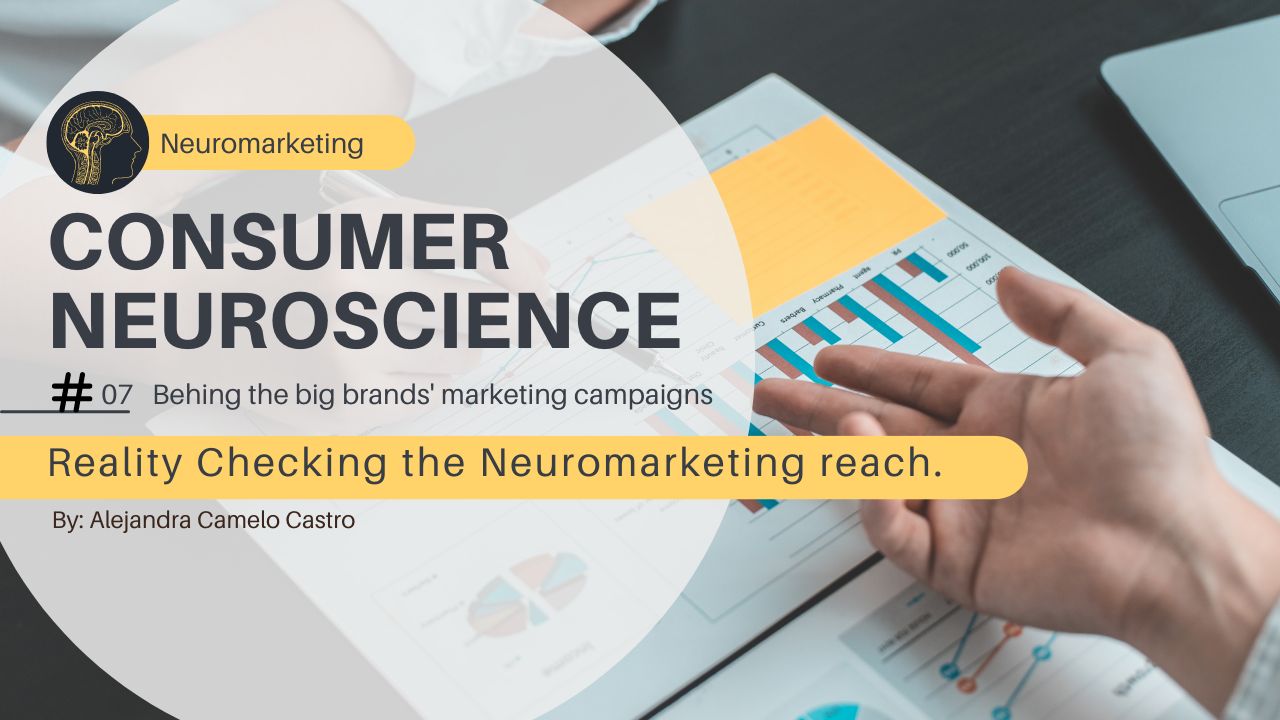https://youtu.be/71e5_LvAoC0
Over the past articles, we explored neuromarketing or consumer neuroscience research techniques that aim at getting insights into the consumer decision-making process through methods that sound, almost out of a science fiction movie, such as brain scans, eye-tracking, and palm readings. These techniques you have read about each of them in my posts: Eye tracking, functional magnetic resonance imaging (fMRI), electroencephalography (EEG), and Galvanic Skin Response. Additionally, we discovered that is a substantial market with promising global growth. Therefore we could assume that some of our favorite brands are using it to create more effective marketing campaigns, and that’s exactly what we will check here today.
Why do Companies utilize Neuromarketing?
On a typical day, the average person may be exposed to thousands of advertising messages, yet many of them won’t succeed in standing out or triggering action, so what separates effective advertising from that which fails to deliver results? Large-scale studies of advertising effectiveness now have provided a robust body of evidence strongly suggesting that effective advertising succeeds in eliciting an emotional response from consumers. Changing the earlier understanding were advertising worked by communicating important facts about the advantages of a product or service, and were most believed that a rational consumer could evaluate the value proposition of competing offerings to arrive at some happiness-maximizing conscious choice relative to his or her defined needs and desires.
The data suggests that the more emotions were at the focus of the campaign, the bigger the business impact, and that the most positive outcomes for advertising campaigns were often those that included little or no rational content at all. More recent converging evidence for this view has been reported by the consumer packaged goods industry, suggesting that advertising with emotional content is on average nine times as effective at driving sales as non-emotional advertising (Nielsen, 2016).
Measuring emotion in advertising can be challenging, but it’s become imperative for brand managers to find tools that dig beneath consumers’ conscious responses to advertising, and instead measure their emotional responses and that is why neuromarketing has claimed an important research source for companies.
Companies Neuromarketing real-life examples.
Let me give you concrete examples of how are major companies using these techniques and how widespread it is. These techniques are usually used in conjunction with them to portray a wider understanding of the individual’s reactions to the marketing stimuli that they are exposed to in the research. For example, Coca-Cola South Africa commissioned an in-store study with Neural Sense that combined Eye-tracking with Galvanic Skin Response (GSR) technologies to investigate the consumer experience of the informal trade (Neural Sense, 2016).
https://www.youtube.com/watch?v=9Xr0tyHxcCw
Tele2 (a Dutch telecom company) wanted to optimize its TV ads to change its brand image. They used Neuro Ad Testing commissioned by Neurensics and obtained the necessary insights. It even led to winning the Silver Effie Award: the award for campaigns proven to be effective. Neurensics tested all of the Tele2 ads using fMRI measuring the unconscious emotions activated by the ads when test participants watch the ads in the MRI, and Eye Tracking analysis to measure which elements in the ads drew attention, in addition to an online questionnaire: used after the MRI scan to better interpret the activated emotions. (Neurensics, n.d)

Image source: Neurensics.
Ebay’s PayPal hoped to persuade more e-shoppers to use its online payment service. Brain-wave research convinced PayPal that speed turns people on more than safety and security, the earlier themes in its ad campaigns. And PepsiCo’s Frito-Lay unit used neuromarketing to test commercials, products, and packaging in the U.S. and overseas. They discovered that matte beige bags of potato chips picturing potatoes and other “healthy” ingredients in the snack don’t trigger activity in the anterior cingulate cortex–an area of the brain associated with feelings of guilt–as much as shiny bags with pictures of chips. Frito-Lay then switched out of shiny packaging in the U.S. at the end of February. (Forbes, 2009)
Pick ‘n Pay, South Africa’s second-largest supermarket chain store commissioned an in-store Eye-tracking study to investigate the consumer experience of their re-designed fresh-look stores and gain insight into their new shopping experience. The results allowed Pick ‘n Pay to optimize how their stores are navigated and how products are stocked on shelves, as well as optimize the consumer journey so that consumers had a better in-store experience, could complete their shop in a quicker time and ultimately drive up their sales. (Neural sense, n.d).
https://www.youtube.com/watch?v=gzEqphG48Pg&feature=emb_logo
Neuromarketing companies also brain test movie trailers for the major studios through fMRI, EEG, galvanic skin response, eye-tracking, and other biometrics to help the studios and distributors better market the movie, although information about it is hard to find, according to branding strategy insider, Sands Research, which conducts neuromarketing studies on TV pilots and trailers, confirmed work on Paramount’s Johnny Depp animated film Rango.
Among other major companies examples, we find vendors of neuromarketing services such as NeuroFocus of Berkeley, Calif., working with Hyundai, Google, and Walt Disney Co.; EmSense of San Francisco, which counts Microsoft among its customers; and Sands Research in El Paso, Tex., which has worked with Chevron. (Forbes, 2009)
Neuromarketing is relatively new, however, although it has become a mainstream practice for companies to engage in this service, the information remains somehow difficult to access, although success stories are shared from the neuromarketing agencies’ side, the major companies do not seem to be actively sharing information on their platforms of the studies they commission, this can be possible due to avoid controversies like the ones faced by the neuromarketing field between 2003 and 2007 (Levallois et al.,2019).



